Since Neil Martin took over at the helm of LendleaseŌĆÖs European construction operations he has returned the firm to profit and steadied the ship. So the question everyone wants to know is how he did it ŌĆō and where the company goes from here in the choppy waters of the Brexit vote. Sarah Richardson sat him down at the second annual ║├╔½Ž╚╔·TV Live conference
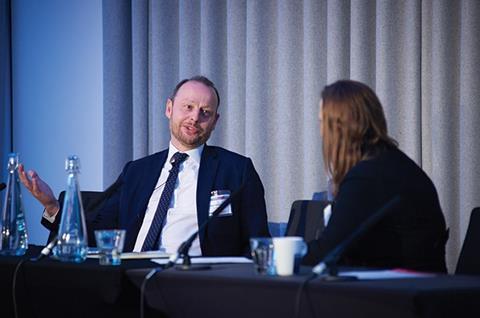
Neil Martin has been in charge of LendleaseŌĆÖs European construction business since 2013 ŌĆō the longest tenure of the Australian-based firmŌĆÖs division. He started out in construction 26 years ago in 1990 with Bovis joining one of its myriad divisions nine years prior to Lendlease acquiring the firm from ports and ferry operator P&O. Martin subsequently spent five years in Australia with LendleaseŌĆÖs global leadership team before returning to London to head the European construction business, which at the time was facing financial challenges and had seen its revenue drop by 59% in the previous three years.
The business has recovered under Martin, reporting in its latest annual results for 2015 a 19% increase in turnover to ┬Ż525m, up from ┬Ż441m for the previous year, and an operating cashflow of ┬Ż29.5m, up from ┬Ż3.9m in 2014.
Part of this recovery is due to the construction business benefiting from work from LendleaseŌĆÖs development arm which is delivering the regeneration of Elephant and Castle and StratfordŌĆÖs International Quarter, but it has also bagged jobs such as the ┬Ż192m role on Great Portland EstatesŌĆÖ mixed-use Rathbone Square development.
More recently Lendlease has been battling it out with other contractors for some prestigious builds, including GoogleŌĆÖs new ┬Ż650m KingŌĆÖs Cross-based HQ; a scheme for the richest man in Asia, who is behind a ┬Ż1.5bn redevelopment of St JohnŌĆÖs Wood Barracks into high-end housing; and a role on the governmentŌĆÖs six new large-scale prisons programme as part of its ┬Ż1.3bn revamp of the prison estate.
Martin therefore was the perfect person to be interviewed by ║├╔½Ž╚╔·TV editor Sarah Richardson for the magazineŌĆÖs second annual ║├╔½Ž╚╔·TV Live conference. Below are the highlights.
MARTIN ON ŌĆ” the market
Sarah Richardson: How are you finding the market at the moment and have you seen much change since the Brexit vote?
Neil Martin: ItŌĆÖs going to be choppy over the next few years and I think weŌĆÖll go up and down as we trigger Article 50 and we get through negotiations ŌĆ” Hopefully thereŌĆÖll be some opportunities in there for the slight of foot.
I donŌĆÖt think the Bovis I joined could exist in todayŌĆÖs world ŌĆō it would have had to evolve and change. Those colourful characters perhaps couldnŌĆÖt exist
Martin on working for Bovis when he first joined
SR: YouŌĆÖve been at Bovis and Lendlease now for almost 19 years. So what would you say the biggest difference is between the company now and back when you joined?
NM: When I joined it was in divisions and those divisions were really quite something ŌĆ” quite strict ŌĆō you were meant to be in one division your whole life. [They were] run by very colourful characters, Ron Pace, Les Chatfield and others ŌĆ” It was fun, hierarchical ŌĆō jump and the question was how high ŌĆō and it was good and it had a great brand, but then if you fast forward to where we are now youŌĆÖve got to come 30 years forward, so you canŌĆÖt really compare because the worldŌĆÖs changed so much. I donŌĆÖt think the Bovis I joined could exist in todayŌĆÖs world ŌĆō it would have had to evolve and change. Those colourful characters perhaps couldnŌĆÖt exist so much in todayŌĆÖs world.
SR: YouŌĆÖll be aware of the lingering perception, not among everybody, but among certain sections of the market that Lendlease construction could still be destined to become purely LendleaseŌĆÖs in-house builder. So whatŌĆÖs your answer to that?
NM: Our in-house development team provide us with a book of business that I am truly grateful for. But it will never be more than 40% because weŌĆÖre too big. ConstructionŌĆÖs too big. Lendlease canŌĆÖt supply the amount of work that would support our construction business. At best it gets to 40%, but generally itŌĆÖs less than that so it means weŌĆÖve got to win 60% externally. And I really like that because as I say youŌĆÖve got 40% at the start of the year or somewhere between 30% and 40%, which is great, which is quite comforting. So that helps me to sleep at night.
SR: In the marketplace youŌĆÖve been seen as one of the blue chip builders like Sir Robert McAlpine. Would you still put yourselves in that bracket?
NM: We never like to compare ourselves. WeŌĆÖre a main contractor and there are other main contractors ŌĆ” ItŌĆÖs a given most contractors can build ŌĆ” question is how you go about that process and I like to think weŌĆÖre on our own in that space ŌĆ” but IŌĆÖm always going to say that.
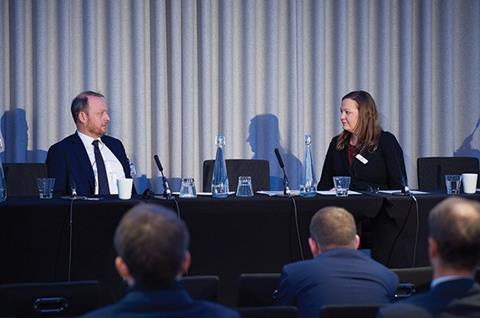
MARTIN ON ŌĆ” being part of Lendlease
SR: Do you think being a part of Lendlease has ultimately turned out to be BovisŌĆÖ benefit?
NM: Absolutely, thereŌĆÖs no doubt about it. ItŌĆÖs no secret we had a tough time middle of the 2000s and youŌĆÖve got to question whether the balance sheet would have withstood that without Lendlease behind it. ThereŌĆÖs also global experience. Lendlease has done everything from tunnels, roads, railways, the highest residential building in America, itŌĆÖs got huge global expertise, thereŌĆÖs probably nothing it hasnŌĆÖt built or done in its network. So we would have never have had that. The other thing about Lendlease and itŌĆÖs probably true of all parent companies, because itŌĆÖs got the relevant funds under management ŌĆō about ┬Ż22bn ŌĆō it has great access to capital and networks. There arenŌĆÖt many capital players that Lendlease doesnŌĆÖt know or canŌĆÖt have chats with and open the door. So when you start looking at what we can use and how we can use it, it puts us in a really great position.
My personal view is we should have dropped the Bovis brand the moment we got bought. When Lendlease took over Bovis, it confused the hell out of a lot of people
Martin on whether Lendlease was right to drop the Bovis brand
SR: When Lendlease eventually dropped the Bovis brand which was in 2011, there was inevitably mixed reaction in the sector and nostalgia. Do you think Lendlease was right to drop the brand?
NM: My personal view ŌĆō my view of this not the companyŌĆÖs view ŌĆō is we should have dropped it the moment we got bought. I think when Lendlease took over Bovis, it confused the hell out of a lot of people ŌĆō who was taking over who. ŌĆ” I just think we should have integrated the brands, the systems, worked much harder at our communication plan around what we were and who we were.
SR: Bringing us up to date, then, youŌĆÖve been heading up LendleaseŌĆÖs Europe construction business since 2013. Before that I think the average tenure in the role was less than two years. Why do you think youŌĆÖve survived?
NM: I took over when the market was slightly turning, so that was a bit of fortuitous luck ŌĆ” There was a lot of warmness towards us [from clients]; we just needed to get, perhaps, our internal organisation sorted to deliver for those clients and I was lucky enough that IŌĆÖd been around the business.
As you said IŌĆÖve done a lot of roles so I knew Lendlease really well, I knew what it wanted, sought answers where weŌĆÖd made mistakes and the things we hadnŌĆÖt done properly.
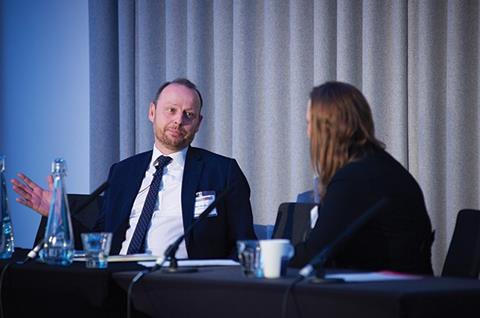
MARTIN ON ŌĆ” the future
SR: WhatŌĆÖs the ambition for the business from here?
NM: IŌĆÖve always been in favour of margins. IŌĆÖd love to have a business that turns over ┬Ż100m and makes ┬Ż50m profit rather than ┬Ż1bn and ┬Ż50m. So I think itŌĆÖs about margin. RevenueŌĆÖs important because of course itŌĆÖs cash and employment.
If you just look at our own organisation I think thereŌĆÖs challenges around how you retain and attract people and how you nurture talent. Part of thatŌĆÖs wellbeing and diversity ŌĆō we still havenŌĆÖt got as much diversity as IŌĆÖd like although weŌĆÖve made great progress.
I have a gut feeling, I think most people do, that our industry will be disrupted and I know we find that hard to understand, but IŌĆÖve no doubt our industry will be severely disrupted. The question is when ŌĆ” So weŌĆÖre doing a lot round innovation and hubs. I canŌĆÖt help thinking as a company and maybe as a wider industry thereŌĆÖs something around a better way of procuring what we do. WeŌĆÖre still a very fragmented industry and it upsets me when I think about our industry in the widest sense.
We also score 4.2 on the average index out of 10 (thatŌĆÖs really low by the way) of attractive careers ŌĆō thatŌĆÖs terrible ŌĆō and so could I be part of trying to change that? IŌĆÖd love to change that. These are the big themes for me. Nothing too ambitious.
I have a gut feeling, I think most people do, that our industry will be disrupted ŌĆō IŌĆÖve no doubt our industry will be severely disrupted
Martin on the need for innovation
SR: So where do you see the biggest areas of opportunity over the next couple of years?
NM: ItŌĆÖs about making sure we understand who our clients are and what they really want and really becoming truly customer focused ŌĆō itŌĆÖs easy to say, more difficult to do, but truly how do you eliminate waste on our side to make us more focused for clients and weŌĆÖve then got to think what the marketŌĆÖs going to do.
The government is going to talk about infrastructure more and thatŌĆÖs definitely going to be a part ŌĆō so therefore what part can we play in that and how do you play to that?
ThereŌĆÖs a massive housing crisis and while residential can be tricky to deliver there must be a better way of trying to deliver that product. So, how do you do that? Comes back to innovation and other ways of perhaps manufacture-led design and how do you do that.
Those are for me the areas weŌĆÖre going to start looking at more heavily.
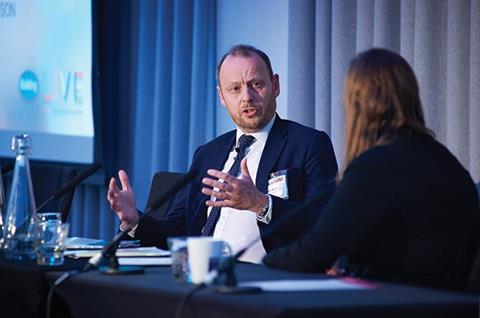
SR: Going back to your Australian parent. How much autonomy do you have from Australia?
NM: I donŌĆÖt [have to go back to Australia] so maybe IŌĆÖm missing something here or maybe thatŌĆÖs why IŌĆÖm still here because they donŌĆÖt know IŌĆÖm still here ŌĆ” I have all the levels of authority that I need to execute [my business plan], so I donŌĆÖt need to go back.
SR: What do suppliers need to do to impress you to be part of your pipeline?
NM: WeŌĆÖve got some great suppliers. DonŌĆÖt forget, weŌĆÖre just a management company so without our supply chain we wouldnŌĆÖt be able to achieve anything that we do.
For me there are a couple of key things: oneŌĆÖs safety. A real genuine culture of safety not just inductions but prove to us and show us whatŌĆÖs your process ŌĆ” The other bit is of course the quality-driven agenda. So how do they make sure they can deliver quality? You want to make sure that should anything go wrong, people are there during the construction and thereafter.
The bit we need to do better on ŌĆō as itŌĆÖs quid pro quo ŌĆō is that we need to get much closer and tighten up our supply chains. WeŌĆÖve still got quite a large supply chain so what IŌĆÖd like to do is tighten it. WeŌĆÖve got a project at the moment where IŌĆÖm trying to get into a situation where we can sole source it because when you talk to a lot of our supply chain, their view is that you donŌĆÖt get us involved early enough, weŌĆÖre buying thousands of whatever it is. If we got in early, you we could help you spec it, you could then access our supply chains. For us the challenge is to get them early on on our deals.
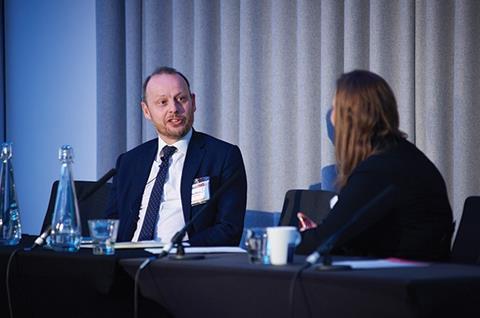
MARTIN ON ŌĆ” his best moment
SR: WhatŌĆÖs been the low point and the high point?
NM: When I was in Australia, one of my roles was in charge of safety globally and while weŌĆÖve been fatality free for three years I had to investigate a fatality and I assure you, you never want to be there, you never want to be there talking to the family, the contractors that were there, writing the report and talking to the authorities. I wouldnŌĆÖt wish that on anybody. That happening was the worst moment of my professional life and I shall never forget it.
On the positive side when I was 16 I didnŌĆÖt genuinely believe I would be sat here running what was Bovis now Lendlease construction across Europe. When I started my career I was ambitious but I didnŌĆÖt think it would end up here.


























No comments yet